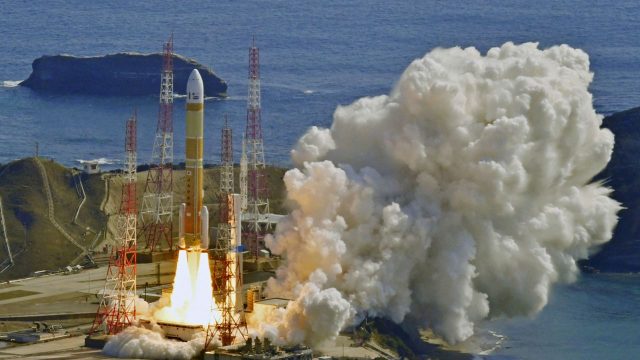Japan’s hopes for the successful launch of its flagship space rocket, the H3, were dashed when controllers issued a destruct command just 15 minutes after takeoff on Tuesday. The Japan Aerospace Exploration Agency (JAXA) announced that the destruct command was given at 10:52 a.m. Japan Standard Time as there was no possibility of achieving the mission. A report from public broadcaster NHK stated that the rocket’s second stage failed to ignite.
The H3 was carrying the Advance Land Observation Satellite-3 (ALOS-3), a ground-mapping and imaging orbiter, which JAXA planned to use as a vital tool in disaster management efforts. The satellite was designed to cover all of the land areas of not only Japan but also across the whole world.
This was JAXA’s second attempt to launch the H3, with the first attempt on February 17 failing when two secondary booster engines did not ignite on the launch pad. The agency had high hopes for the H3, which was expected to be more economical than other launch vehicles due to its use of commercial-off-the-shelf products from other domestic industries like the automobile industry.
The H3 was also expected to launch both government and commercial missions with flexible configurations based on what it would need to lift into orbit. Mitsubishi Heavy Industries was the prime contractor for the rocket, and JAXA and Mitsubishi had invested more than $1.5 billion in the project since its inception.
Despite the setback, JAXA remains determined to create an operational world where the Japanese industrial base can be underpinned by steadily launching the H3 six times or so annually for 20 years. The agency is confident in the rocket’s performance and price and is looking forward to regular launches over the long term.
The failure of the H3’s maiden launch is a setback for JAXA, but the agency has a history of overcoming challenges and persevering with its space programs. JAXA has made significant contributions to the field of space exploration, including the development of the Kibo module, which is part of the International Space Station, and the successful deployment of several scientific satellites.
The failure of the H3 launch is a reminder of the risks and challenges inherent in space exploration. Even with careful planning and preparation, unforeseen problems can arise that can cause missions to fail. However, the lessons learned from these failures can help engineers and scientists improve their technology and processes, leading to more successful missions in the future.
JAXA has not yet announced when it will attempt to launch the H3 again, but the agency is likely to conduct a thorough investigation into the cause of the failure and take steps to address any issues before the next launch attempt.
In the meantime, JAXA will continue to work on its other space programs, including the Martian Moons eXploration (MMX) mission, which is scheduled to launch in 2024. The MMX mission will aim to collect samples from Phobos, one of the moons of Mars, and return them to Earth for analysis.
Overall, the failure of the H3 launch is a setback for JAXA, but it is not the end of the agency’s space exploration ambitions. JAXA will continue to pursue its mission of advancing scientific knowledge and promoting peaceful cooperation in space, working towards a future where humanity can explore and discover the mysteries of the universe.


